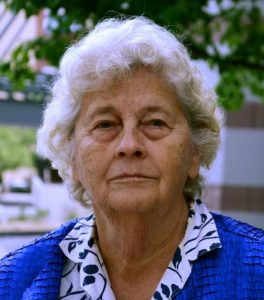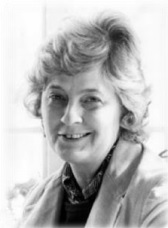Colleagues, former students, and advocates are sharing remembrances and tributes to Dr. Eula Bingham, who passed away on Saturday, June 13 at the age of 90.
Dr. Bingham was a skilled toxicologist and powerful advocate for workers. She was the assistant secretary of labor for OSHA during the Carter Administration (Jan. 1977 – Jan. 1981). During her tenure, OSHA adopted many standards including on benzene, DBCP, arsenic, cotton dust, lead, and access to medical records. Dr. Bingham worked closely with luminaries in the occupational health, notably, Dr. John Froines, Dr. Phil Landrigan, Dr. Anthony Robbins, and the late Dr. Cesare Maltoni and Dr. Irving Selikoff.

I’ve been reading heartfelt exchanges from colleagues about Dr. Bingham. One theme that’s repeated is: Eula was a mentor. That’s certainly one that resonates with me, too.
When I started working at OSHA in 1991, it wasn’t long before I heard the name Eula Bingham. I learned about her stature in toxicology and occupational health. I learned about her persistence in demanding—not just any workplace safety regulations—but the most protective ones. I learned about her vision to build the capacity of workers to learn about their rights, train others to do the same, and act collectively to demand healthy and safe jobs.
I had the pleasure of collaborating with Eula beginning in 2002. It was a joy to meet her that very first time and a joy to see her on every occasion.
She was a scientist through and through, and layered on top was an added skill: Mastering the back-stabbing and sandtrap-laden environment of Washington, DC. Dr. Bingham was not the least bit pretentious and could see through b.s. I loved that about her, as well as her wonderful laugh and twinkle in her eye.
Long into her “retirement,” Dr. Bingham stayed up-to-date on the worker health and safety movement. She was repulsed by politicians and industry consultants who erected and maintained obstacles meant to protect workers from injuries and disease. She never gave up the fight and she expected all of us to continue it. Most importantly, she also stressed our responsiblity to bring new, younger and representative people into the movement.

Eula was a great story teller—-and she had many. There were stories of White House meetings where she and Labor Secretary Ray Marshall stood up to anti-regulatory forces in the Carter administration.
She told me about her visit to Willow Island, WV, one day after the Pleasants Power Station collapsed. The April 27, 1978 disaster killed 51 construction workers. There was unfathomable massive destruction. “It was like a bomb went off,” she told me. “All the workers were local. The town was in shock.” The site of the destruction and death was indescribable. She said she’d never ever forget that scene.
Phil Landrigan, MD, president of the Collegium Ramazzini, offers a stellar tribute to Dr. Bingham’s many scientific accomplishments and leadership. He writes:
“Her thoughtful and generous wisdom shaped the entire field of occupational safety and health. Her bold and courageous actions prevented countless illnesses and injuries in workers around the world.”
Dr. Landrigan’s eulogy concludes with this sentiment offered by former President Jimmy Carter in 2015:
“I was fortunate to have many outstanding appointments in our administration, and Eula was one of the best. I always could count on her for sound and direct advice with the well-being of the American worker foremost in her mind. She helped eliminate barriers to women in the workforce and to make our nation’s workforce stronger and more productive. Eula deserves credit as one of the unsung heroes giving women an important voice and a place in our nation’s history. We all should be proud of her service to our country.”
John Froines, PhD, professor emeritus at UCLA shared this message with me:
“Eula Bingham was an extraordinary scientist, leader, and I must add, politician. I had the great honor of working with her from 1997-1999 at OSHA. During that time, we managed to create landmark standards for OSHA on lead and cotton dust, the most comprehensive occupational health standards at the time. I believe that the occupational lead standard is the most important achievement of my long career, later with NIOSH and then at UCLA Fielding School of Public Health. “Most importantly,” he added, “Eula and I have always remained close friends. Her loss to the world of occupational health is major.”
Davitt McAteer, who served as the assistant secretary for MSHA and acting solicitor of labor during the Clinton administration shared these thoughts with me:
“Eula Bingham was a class act, her calmness, wit, and steadiness were attributes which made her a pillar of the Occupational Safety and Health movement for decades in this country. She was an advocate for workers at all times and under all circumstances. When she entered government service, unlike some others, did not forget what she was there for: the improvement of protections for workers.
The stature of the job nor the attention of the media, Congress or the Administration did not sway her from her mission, while she recognized the need for compromises, she also remembered that she was there for improving workers’ health and safety. And in her role of consolerm, she offered sound advice coupled with humor and the recognition that the world is not a perfect place and at times the good is better than the perfect. We will miss her calm and lovely voice.”
The journal New Solutions (Sage Publications) has made the 2009 article “Eula Bingham—Experience Bares ‘The Real World’ and Smart Politics Saves Lives” open access.
I had the pleasure of seeing Eula in April 2019 when she was honored by the Asbestos Disease Awareness Organization. Knowing Eula’s knack for story-telling,retired assistant surgeon general Richard A. Lemen, DrPH, shared this one:
When President Carter’s administration concluded, Dr. Bingham departed from OSHA. One of her critics infamously decreed “the wicked witch is dead.”
How did Dr. Bingham respond? She said, “Well, I’m here to tell you that the wicked witch is not dead. She’s merely rearranging her broom — and passing out a lot more brooms to her students.”
I am grateful and proud to be one of her many, many students. Eula, thanks for the broom.
—

A beautiful tribute to an amazing occupational health leader! I hadn’t heard the “wicked witch” story before, but now I will always envision Eula Bingham passing out brooms so we can clean up unsafe workplaces.
A great tribute. Thank you.
I had the pleasure of working with Eula and her solicitors, while temporarily transferred from my NIOSH post, for the Cotton Dust Hearings of the then proposed Cotton Dust Standard based on our North Carolina studies. After successfully fending off an industry inspired Congressional mandate to produce a cost-benefit study, the completed standard required the Presidential approval of Jimmy Carter. As related to me by Eula years later, this required DOL Secretary Ray Marshall and her to meet with Carter, VP Walter Mondale and his economic advisers in the Oval Office, to decide the fate of the standard. After hearing from the economic advisors, who opposed issuing the standard, and Eula who provided, I am sure, a spirited defense, President Carter, with his characteristic smile, put his arm around Eula’s shoulder and said “I am with Eula on this one.” With that the Cotton Dust Standard was promulgated, to be litigated through the courts and politically opposed by the Reagan Administration, but too late—the Supreme Court had accepted the contested case pitting formal cost-benefit analysis for such health-based standards vs. worker health, and then upheld the standard while setting precedence for many decision to come. This is but one of many stories that cement the legacy as champion of worker health and safety that was Eula Bingham.
Dr. Merchant,
Thank you for filling in the details on Eula’s tales from the White House’s Oval Office. I love the line “I’m with Eula on this one”!